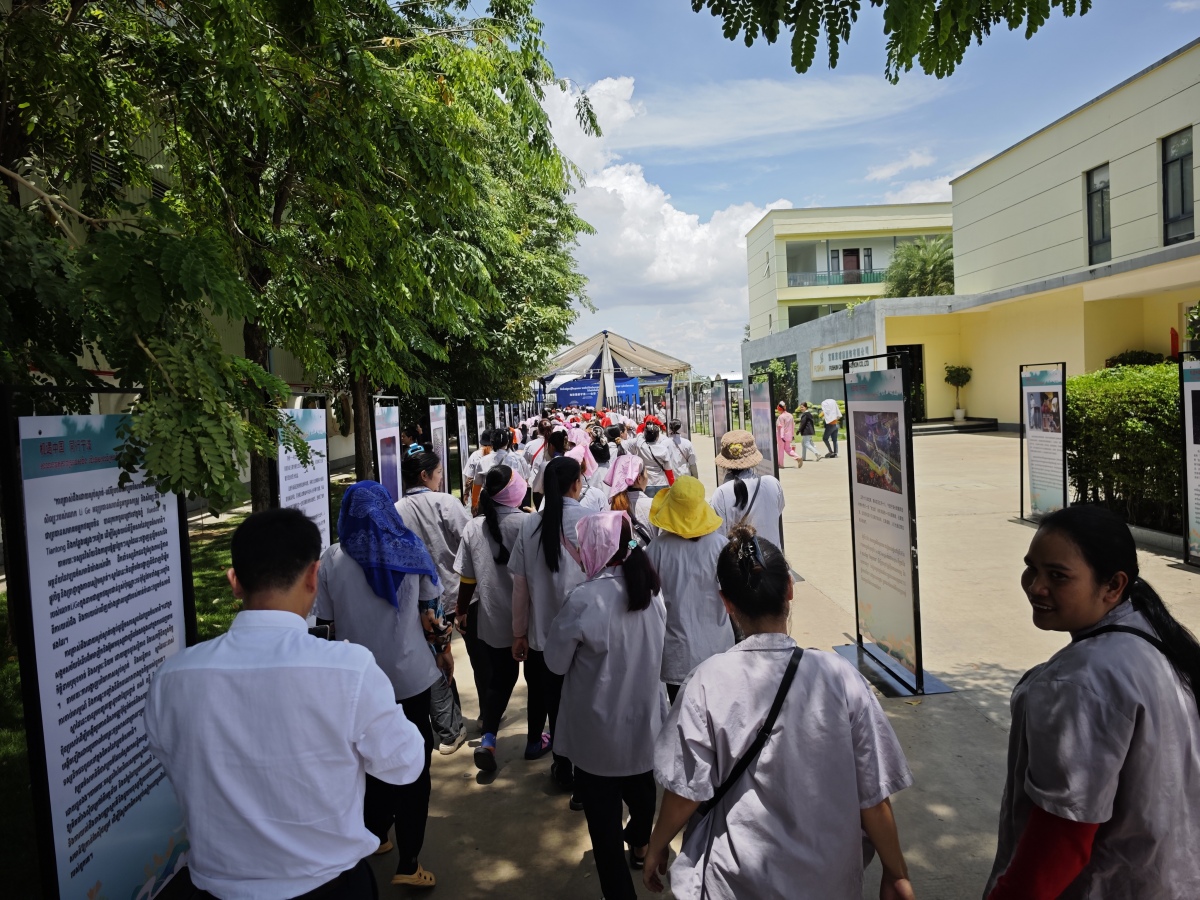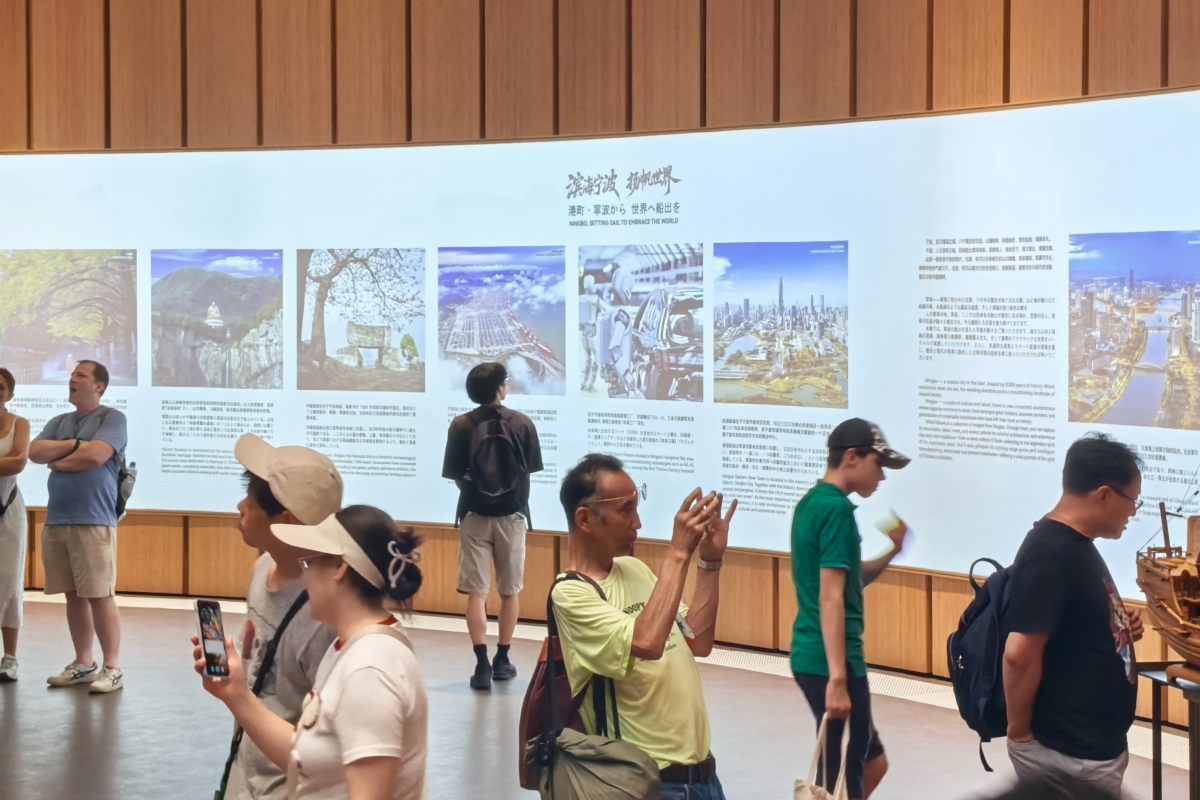On the morning of July 16th, the National Bureau of Statistics held a press conference to announce the economic report card of China in the first half of 2018, which was evaluated as "stable to good" in four words. In the first half of the year, the GDP increased by 6.8% year-on-year.
That night, CCTV Financial Channel invited the National Bureau of Statistics.chief economic managerSheng Laiyun and Zhao Changwen, Minister of Industrial Economy Department of the State Council Development Research Center, were guests in the studio and made a heavy interpretation.

In the first half of the year, China’s economy was macro-stable, meso-progressive and micro-good.

Sheng Laiyun: Macro-stability is reflected in "three stabilities and one improvement"

Sheng Laiyun, Chief Economist of National Bureau of Statistics:It is the stable growth, stable employment, stable prices and the improvement of international payments, which are also the four major indicators that we often observe the macroeconomic operation situation.
"Steady growth", the semi-annual report shows that it increased by 6.8% in the first half of the year and 6.7% in the second quarter, which is the 12th consecutive quarter that China’s economy has been running at 6.7%— 6.9%, so the growth stability is very strong.
"Employment is stable", and it is stable and positive. We released the survey unemployment rate data for the first time in the first quarter of this year, which was 4.8% in June and operated below 5% for three consecutive months. Moreover, there are data on the total number of new jobs in cities and towns. In the first half of the year, the number of new jobs was 5.72 million, which was 68% for the whole year.
"Stable price", the price index of CPI is 1-mdash this year; June basically fluctuated around 2%.
"One improvement" means the continuous improvement of the international balance of payments. In the first half of the year, the surplus of trade in goods was more than 900 billion yuan, which was sharply narrowed by 26.7% compared with the previous year, but our foreign exchange reserves remained above 3.1 trillion US dollars.
Therefore, judging from these major indicators, the economic operation in the first half of the year was generally stable, and there were many bright spots in a reasonable range.
Zhao Changwen: From the perspective of progress, we can observe it from three aspects.

Zhao Changwen, Minister of Industrial Economics, the State Council Development Research Center:On the one hand, from the perspective of investment, the whole investment, especially the investment in manufacturing industry, has maintained a trend of steady improvement. In the first half of this year, manufacturing investment increased by 6.8%, compared with the past, for example, last year, which was about 4%— The range of 5% and the level of 2.8% in the lowest quarter of 2016 did show a good change. Investment in manufacturing industry is actually a very important signal reflecting the confidence of entrepreneurs and the real economy.
The second is to observe the relationship between supply and demand and the balance between supply and demand. Then there is an indicator of capacity utilization rate in the data released today, 76.7%, which actually reflects that the relationship between supply and demand in the whole economy, especially in the real economy, is undergoing very positive changes. Compared with the past, the first quarter of 2016 was 72.9%, which is a big change compared with the new data. Not only is the overall utilization rate changed, but the utilization rate of many industrial sectors has improved. In the past few years, the capacity utilization rate of steel and coal, which have relatively large capacity, has improved.
The third aspect is from the perspective of industrial structure optimization. For example, the growth rate of high-tech industries and equipment manufacturing industries is obviously faster than that of industries above designated size, and the growth rate of service industries is relatively good, so I think these three aspects are enough to see progress from a medium perspective.
Sheng Laiyun: micro-good, mainly reflected in two aspects.
National Bureau of Statistics(NBS)chief economic manager Sheng Laiyun:On the one hand, the profits of enterprises are constantly improving, and on the other hand, the income of residents continues to increase, which is a manifestation of two microeconomic entities. From the perspective of corporate profits, this year is 1-mdash; In May, the profits of industrial enterprises above designated size increased to 12.5%, which was 4.9 percentage points faster than that in the first quarter, which is remarkable. Because two years ago, we remember that when we released the data, we said that the macro level was good and the micro level was not good. At that time, the production price of industrial products continued to decline, and corporate profits declined, with an increase of 21% last year. Therefore, in the first half of this year, the profits of enterprises continued to improve on the basis of an increase of 21% last year, which is a bright spot.
From the residents’ point of view, residents’ income continues to increase steadily. According to the survey of the National Bureau of Statistics, the national per capita disposable income increased by 8.8% in the first half of the year, and after deducting prices, it increased by 6.6%, which is similar to the GDP growth rate of 6.8%.
Therefore, from the perspective of these two micro-subjects, the micro-economy has performed well.
Zhao Changwen: Micro-good is also reflected in the improvement of corporate efficiency

Zhao Changwen, Minister of Industrial Economics, the State Council Development Research Center:Not only is the total profit increased, the key is that the profit rate of many industries has been significantly improved. For example, the profit rate of industrial main business income announced in the first half of this year is 6.36%, which is actually much higher than in the past, which is a very positive change. In addition, the micro-good is also reflected in the fact that more and more people are willing to start businesses, and more and more enterprise market players are born. We also have a data that the number of newly registered enterprises registered every day reaches 11,800.
The world economy is facing challenges.

Sheng Laiyun: Pay full attention to the long-term, complex and arduous Sino-US trade war.
National Bureau of Statistics(NBS)chief economic manager Sheng Laiyun:One of the biggest challenges in the external environment this year is that the United States insists on provoking trade frictions around the world, especially the escalating trade dispute against China, which has indeed brought great uncertainty to the stable recovery of the world economy. Judging from the data of our semi-annual report in the first half of the year, its influence has not been fully revealed, but I think we should attach great importance to this matter, because the trade friction initiated by the United States is worldwide, not just against China. Uncertainty itself is a risk, because uncertainty not only affects people’s expectations, but also affects people’s investment and consumption behavior, especially the trade dispute against China, which actually has a great impact on China’s industries, including industrial chains, industrial chains and industrial layout around the world. We should attach great importance to this issue and conduct in-depth research.
Sheng Laiyun: Facing the trade war, strengthen confidence and maintain strength.

National Bureau of Statistics(NBS)chief economic manager Sheng Laiyun:I think Sino-US trade disputes should be prepared for a protracted war. At the same time, we should see its impact, strengthen our confidence and maintain our strength. Because now we are standing on the moral high ground, we insist on multilateralism, free trade, unilateralism and protectionism, we conform to the trend of globalization, and we are upholding the rules of fair and free trade competition. There is a saying in China that a word helps a lot, so we should keep our concentration.
Sheng Laiyun: The biggest advantage of China is its vast market space and great consumption potential.
National Bureau of Statistics(NBS)chief economic manager Sheng Laiyun:The market space in China is very large, and our greatest advantage and potential are its vast market space, great consumption potential and large room for manoeuvre, so we can trade time for space and finally win the Sino-US trade dispute.
Sheng Laiyun: Take the initiative to turn crisis into opportunity.

National Bureau of Statistics(NBS)chief economic manager Sheng Laiyun:Turn a crisis into an opportunity and take the initiative. This dispute is actually a reverse mechanism, which can force us to further reform and opening up, and can force us to further increase reform and transformation and upgrading, including adjusting some of our industrial structures. Because in the past, China was the factory of the world, and a considerable part of our products were designed to meet some consumption of developed countries, so under the current environmental conditions, we must increase innovation.
Sheng Laiyun: Respond to the risk challenge of uncertainty with deterministic transformation and upgrading and further reform and opening up.
National Bureau of Statistics(NBS)chief economic manager Sheng Laiyun:We should take the initiative to open up and upgrade, and strive to turn this crisis and challenge into an opportunity to promote China’s reform, opening up, transformation and upgrading.
Zhao Changwen: The uncertainty brought by the trade war may disturb the expectations of the real economy and financial markets.

Zhao Changwen, Minister of Industrial Economics, the State Council Development Research Center:This trade dispute between China and the United States involves many aspects. Although it is manifested in trade, it will actually bring some influence to the whole economic and trade field, not only to China, but also to the world. As we all know, the Sino-US trade dispute was initiated by the United States, and we were forced to fight. In fact, I think there are risks and opportunities, or there are both risks and opportunities behind this uncertainty, because risks and opportunities are originally problems that accompany each other. What is the biggest risk for us? It may have a great disturbing effect on the development of China’s economy, the development of the real economy and the expectation of the financial market, and this disturbing effect will change the behavior of investors, thus bringing some influence. Therefore, in this sense, we must do a good job in risk management, including further strengthening our supervision and deepening reform and opening up to improve our ability to cope with risk management.
Zhao Changwen: The trade war made us realize the importance and urgency of mastering key technologies.
Zhao Changwen, Minister of Industrial Economics, the State Council Development Research Center:This may also be a good opportunity for us to further improve our development, and we can actually observe this opportunity from many aspects. For example, it can make us further realize the shortcomings of our development and the shortcomings of our development, especially the key technologies and core technologies that are subject to people’s situation. Perhaps in the past, we felt that there was a gap between us and the United States, but we didn’t realize that the gap was actually very large. Then a stronger consensus will be formed, and we must work hard to solve the shortcomings of these key technologies and core technologies. There is another aspect. In fact, the development of China in the past 40 years of reform and opening up is largely due to the reform and opening up. Therefore, I want to take this Sino-US trade dispute as an event to further promote opening up and deepen reform. This is also an opportunity that I think the Sino-US trade dispute has brought us, and all parties have reached a consensus to further deepen reform and promote opening up.
China’s economy will remain stable and positive in the second half of the year.

Sheng Laiyun: The biggest strength to support China’s economy is transformation and upgrading.
National Bureau of Statistics(NBS)chief economic manager Sheng Laiyun:Judging from the current situation, I think the second half of the year will continue to maintain the overall stability, stability and improvement, and stability and quality improvement. The main reason is that I think there are still many conditions and potentials to support China’s stable economy, and there are still many conditions to work hard. I think the biggest advantage is that China’s economy is in a good state of transformation and upgrading, and its economic operation stability, coordination and sustainability are constantly increasing. It is no accident that China’s economic growth rate has remained in the range of 6.7% and 6.9% for 12 consecutive quarters, because China’s economy has successfully switched from high-speed growth to medium-high-speed growth after nearly seven years of adjustment, and this shift can be said to be relatively successful. In addition, I think the transformation and upgrading are in good shape. On the one hand, from the perspective of industrial structure, in recent years, China’s economic and industrial structure has realized a transformation from industry-led to industrial service-oriented to jointly promote economic growth, and the contribution rate of service industry to economic growth is constantly improving, becoming the main driving force for growth. This trend continued in the first half of this year. In the first half of this year, the service industry accounted for 54.3% of GDP, which was about 3 percentage points higher than last year, and the contribution rate to GDP growth reached 60%. This is one of the confidence.
Another reason is that the structure of demand is also constantly upgrading, that is, the original investment is driven by investment, consumption and import and export, especially the role of consumption in supporting the stable operation of the economy is obviously enhanced. One data in the first half of the year is that the contribution rate of final consumption to GDP growth among the three major demands reached 78.5%, an increase of 14 percentage points over last year.
These two aspects determine that the stability and coordination of China’s economic operation are being enhanced, and China’s economy is the biggest confidence to maintain steady progress and stability.
Zhao Changwen: The strength to support China’s economy comes from the determination to promote high-quality development.
Zhao Changwen, Minister of Industrial Economics, the State Council Development Research Center:I think the greatest strength of China’s economy comes from the following aspects: first, our confidence and determination to promote high-quality development; second, our confidence and determination to comprehensively deepen reform and promote opening up; and third, the yearning and pursuit of a better life by all the people and their unremitting efforts for this, which is our greatest strength. Of course, we also have many favorable conditions objectively. Although there is a gap between us and the United States, as far as the world is concerned, compared with ourselves, the speed of industrial upgrading in China is still relatively fast. Especially from the manufacturing sector, the proportion of exports from our medium and high-tech manufacturing sector to the whole manufacturing industry should keep rising. This indicator has declined in the past few years, including the United States, the European Union and Japan. This actually reflects the improvement of the international competitiveness of China’s manufacturing sector from one side, which is where our confidence lies.
Source: CCTV Finance (ID: cctvyscj)











































